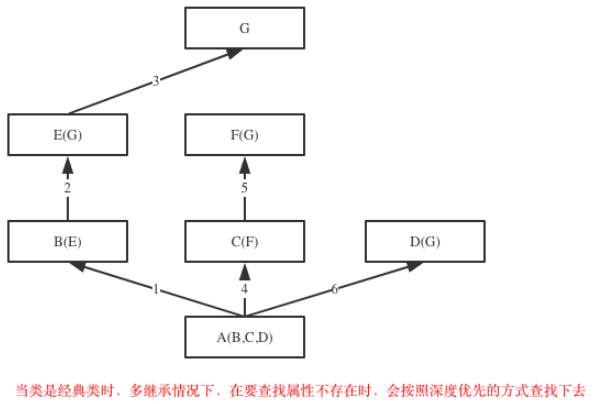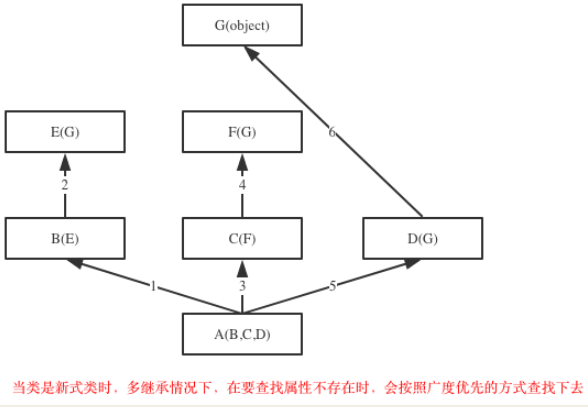面向对象的三大特征 - 封装 - 继承(重要) - 多态 - 继承的属性查找顺序 - 单继承下的属性查找 - 多继承下的属性查找 - super()和mro()列表 - 多态与多态性(了解)
一、面向对象的三大特征
封装:封装指的就是把数据与功能都整合到一起
继承应用
1. 什么是继承?
# 继承就是新建类的一种方式,新建的类我们称为子类或者叫派生类,被继承的类我们称为父类或者基类
# 子类可以使用父类中的属性或者方法
2. 为什么要用继承?
类解决了对象与对象之间的代码冗余问题
继承解决的是类与类之间的代码冗余问题
3. 如何使用继承?
新式类:继承了object类的子子孙孙类都是新式类
经典类:没有继承了object类的子子孙孙类都是经典类
# 新式类和经典类只有在python2中区分
class Student: #定义学生的类 school = 'SH' def __init__(self,name,age,gender): #初始化对象实行实际传参 self.name = name self.age = age self.gender = gender def choose(self): print("%s选课成功" %self.name) stu1 = Student('jj',18, 'male') stu2 = Student('qq',18, 'male') stu3 = Student('aa',18, 'male') stu4 = Student('bb',18, 'female') class Teacher: school = 'SH' def __init__(self,name, age,gender,level): self.name = name self.age = age self.gender = gender self.level = level def score(self): print('%s正在为学生打分'% self.name) tea1 = Teacher('nn',18,'male',80) tea2 = Teacher('lxx',38,"male",3)
从上面看出:类与类之间存在重复代码。老师与学生都是人类,所以我们可以得到如下的继承关系,实现代码冗余
方式一,指明道姓地引用某一个函数,与继承无关 class people: school = 'SH' def __init__(self ,name, age, gender): self.name = name self.age = age self.gender = gender class student(people): def choose(self): print('%s 选课成功' %self.name) class teacher(people): def __init__(self,name,age, gender,level): people.__init__(self, name, age, gender) #再子类的派生功能中重用父类功能 self.level = level def score(self): print('%s 正在为学生打分'%self.name) stu1 = student('jj',18,'male') stu2 = student('tom',19, 'female') teal = teacher('mm',18,'male',3) tea2 = teacher('ll',18,'male',5) print(stu2.name) print(stu1.school) print(teal.name)
方式二:SUPER()返回一个特殊的对象,该对象会参考发起属性查找的哪一个类的mro列表,去当前类的父类中找属性,严格以来继承
class people: school = 'SH' #公用的属性 def __init__(self,name,age,gender): #共用的方法 self.name = name self.age = age self.gender = gender class Teacher(people): def __init__(self,name, age, gender,level): #people.__init__(self, name, age, gender) super(Teacher, self).__init__(name,age,gender) self.level = level def score(self): print('%s 正在给学生打印分数' % self.name) tea1 = Teacher('hxx',18,'male',10) print(tea1.__dict__) #{'name': 'hxx', 'age': 18, 'gender': 'male', 'level': 10}
继承的实现原理
继承顺序
Python中子类可以同时继承多个父类,如A(B,C,D)
如果继承关系为非菱形结构,则会按照先找B这一条分支,然后再找C这一条分支,最后找D这一条分支的顺序直到找到我们想要的属性
如果继承关系为菱形结构,那么属性的查找方式有两种,分别是:深度优先和广度优先


继承顺序
# 继承顺序 class A(object): def test(self): print('from A') class B(A): def test(self): print('from B') class C(A): def test(self): print('from C') class D(B): def test(self): print('from D') class E(C): def test(self): print('from E') class F(D,E): # def test(self): # print('from F') pass f1=F() f1.test() print(F.__mro__) #只有新式才有这个属性可以查看线性列表,经典类没有这个属性 # 新式类继承顺序:F->D->B->E->C->A # 经典类继承顺序:F->D->B->A->E->C # python3中统一都是新式类 # pyhon2中才分新式类与经典类
class People(): school = 'SH' def __init__(self, name, age, gender): self.name = name self.age = age self.gender = gender class Teacher(People): def __init__(self, name, age, gender, level): self.level = level super().__init__(name, age, gender) # super的使用 # mro列表练习1 class A: def test(self): print('from A.test') super().test() class B: def test(self): print('from B') class C(A, B): pass c = C() c.test() # mro列表练习2 class B: def test(self): print('B---->test') def aaa(self): print('B---->aaa') class A: def test(self): print('A---->test') super().aaa() class C(A, B): def aaa(self): print('C----->aaa') c = A() # c.test() # 打印结果: print(A.mro())
1. 什么是多态 水:液态水,固态水,气态水 动物:人,猪,狗,猫 ... # 抽象类: 抽象类只能被继承,不能被实例化 class Animal(metaclass=abc.ABCMeta): @abc.abstractmethod # 该方法已经是抽象方法了 def speak(self): pass @abc.abstractmethod def login(self):pass class People(Animal): def speak(self): # print('嗷嗷嗷') pass def login(self): pass class Pig(Animal): def speak(self): print('哼哼哼') class Dog(Animal): def speak(self): print('汪汪汪') obj = People() obj.speak() # 多态练习 class Pig(): def speak(self): print('哼哼哼') class Dog(): def speak(self): print('汪汪汪') class Txt(): def speak(self): print('Txt') obj = People() obj1 = Pig() obj2 = Dog() obj3 = Txt() # 多态带来的特性:在不用考虑对象数据类型的情况下,直接调用对应的函数 def animal(animal): return animal.speak() animal(obj) animal(obj1) animal(obj2) animal(obj3) # 父类限制子类的行为 class Animal(): def speak(self): raise Exception("必须实现speak方法")


 浙公网安备 33010602011771号
浙公网安备 33010602011771号